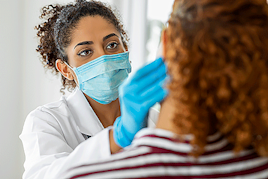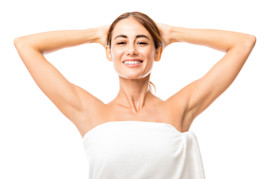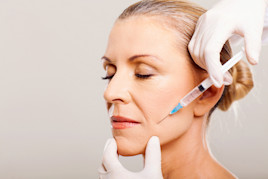Salicylic Acid Vs. Benzoyl Peroxide For Treating Acne – Minimalist
Looking for:
- Salicylic acid+benzacSalicylic acid+benzac. Benzac Ac 2.5% Tube Of 20gm Gel
Benzoyl peroxide
1. About benzoyl peroxide
Benzoyl peroxide is used to treat acne. It works as an antiseptic to reduce the number of germs (bacteria) on the surface of your skin.
It comes as a gel or face wash containing 5% benzoyl peroxide. This is available to buy from pharmacies under the brand name Acnecide.
Benzoyl peroxide is sometimes mixed with potassium hydroxyquinoline sulfate. This is an "antimicrobial" ingredient that kills micro-organisms on your skin. It's sold in pharmacies as Quinoderm cream.
Some benzoyl peroxide products are available on prescription only. This is because they contain other active ingredients such as antibiotics or retinoids (exfoliants).
Many popular skincare brands also make products that contain benzoyl peroxide, but at a lower strength. These are available to buy in pharmacies, supermarkets and shops. Brands include Clean & Clear, Neutrogena and Clearasil.
2. Key facts
- Benzoyl peroxide 5% takes around 4 weeks to start que es benzac ac wash usually use it 1 or 2 times a day.
- The most common side effect is skin irritation. It is better to use it less often at first, then build up as your skin gets used to it.
- Pharmacy brands include Acnecide 5% gel and Acnecide Wash 5%.
- Benzoyl peroxide is also an ingredient in Duac Once Daily (with clindamycin, an antibiotic) and Epiduo gel (with adapalene, a retinoid).
3. Who can and cannot use benzoyl peroxide
Most adults and children over 12 years old can use benzoyl peroxide.
Benzoyl peroxide is not suitable for some people.
To make sure benzoyl peroxide is safe for you, tell your doctor before using this medicine if you:
- are allergic to benzoyl peroxide or other medicines.
- have damaged or broken skin where you need to use the treatment.
- have very bad acne with nodules (large, hard lumps that build up beneath the surface of the skin and can be painful) or cysts (large, pus-filled lumps that look similar to boils). These need to be treated by a doctor to avoid scarring.
4. How and when to use it
Benzoyl peroxide is for use on your skin only.
Always wash your hands before and after using this medicine.
If your skin becomes dry or starts peeling, try using benzoyl peroxide less often. Put it on once a day or once every 2 days, until your skin gets used to it.
Benzoyl peroxide can bleach or discolour your hair, as well as clothes, towels and bedding. Keep it away from hair and coloured fabrics.
How to use benzoyl peroxide 5% gel
- Wash the affected area with a mild skin cleanser and water.
- Gently pat your skin dry.
- Put a thin layer of gel on all the affected areas. If your whole face has acne, use a strip of gel (2.5cm long) each time.
You'll usually use the gel once or twice a day. If you have sensitive skin, use the gel once a day, before going to bed.
Try to avoid strong sunlight while using benzoyl peroxide gel. Use an oil-free sunscreen, or a moisturiser or foundation with added SPF30. In stronger sunlight, use SPF30 or above. Ask a pharmacist to help you pick a sunscreen that's right for your skin type.
How to use benzoyl peroxide 5% wash
- Wet the area you want to treat.
- Place a small amount of the product onto your hands.
- Smooth it onto the affected area.
- Keep the wash on your skin for no more than 1 to 2 minutes.
- Rinse your face thoroughly with water.
- Gently pat your skin dry.
You'll usually use the wash 1 or 2 times a day.
How long will I use it for?
It depends on how quickly your condition improves.
Benzoyl peroxide will usually start to work within 4 weeks, but once your acne is under control you may want to keep using it to stop your acne coming back.
What if I forget to use it?
It does not matter if you forget to use benzoyl peroxide.
When you remember, start using it again once or twice a day in the same way as before.
What if I use too much?
If you use too much benzoyl peroxide, your skin may become irritated. Wash off as much as you can and wait for the irritation to go away.
When your skin has calmed down again, you can start using benzoyl peroxide again. Be careful to follow the instructions on the package.
Important: Important
Keep benzoyl peroxide away from your eyes. If you get the gel or wash in your eyes, rinse thoroughly with lukewarm water for a few minutes or until it stops stinging.
7. Pregnancy and breastfeeding
It's usually safe to use benzoyl peroxide during pregnancy and while breastfeeding.
Benzoyl peroxide and breastfeeding
Although it's generally OK to use benzoyl peroxide when you're breastfeeding, do not use it on your chest area and wash your hands before touching your baby. This is so your baby does not come into contact with it.
Important: Important
Tell a pharmacist or doctor if you're trying to get pregnant, already pregnant or breastfeeding
8. Cautions with other medicines
Some products and medicines can irritate your skin if you use them while you're treating your skin with benzoyl peroxide gel or wash.
Do not use benzoyl peroxide with any other medicines that may have drying or irritating effects on your skin. These include alcohol-based skincare products. Always check the ingredients on the label and choose products for sensitive skin.
Do not use other benzoyl peroxide products or other acne medicines (such as isotretinoin), unless your doctor or pharmacist says it's OK. It may cause your skin to become very sore.
Mixing benzoyl peroxide with herbal remedies and supplements
There's very little information about taking herbal remedies and supplements while using benzoyl peroxide.
Important: Important
Tell your doctor or pharmacist if you are taking any other medicines, including herbal remedies, vitamins or supplements.
9. Common questions
Is any acne treatment safe to use during pregnancy?
Diseases & conditions
Featured
 Monkeypox: What you need to know
Monkeypox: What you need to knowMonkeypox is a contagious disease that causes a rash. A board-certified dermatologist explains what the rash looks like and when to seek medical care.
 When to treat molluscum contagiosum
When to treat molluscum contagiosumThis contagious skin disease will usually clear on its own, but sometimes dermatologists recommend treating it. Find out when.
Everyday care
Featured
 Practice Safe Sun
Practice Safe SunEveryone's at risk for skin cancer. These dermatologists' tips tell you how to protect your skin.
 Relieve uncontrollably itchy skin
Relieve uncontrollably itchy skinFind out what may be causing the itch and what can bring relief.
Darker Skin Tones
Featured
 Fade dark spots
Fade dark spotsFind out why dark spots appear and what can fade them.
 Untreatable razor bumps or acne?
Untreatable razor bumps or acne?If you have what feels like razor bumps or acne on the back of your neck or scalp, you may have acne keloidalis nuchae. Find out what can help.
Cosmetic treatments
Featured
 Laser hair removal
Laser hair removalYou can expect permanent results in all but one area. Do you know which one?
 Scar treatment
Scar treatmentIf you want to diminish a noticeable scar, know these 10 things before having laser treatment.
 Botox
BotoxIt can smooth out deep wrinkles and lines, but the results aren’t permanent. Here’s how long botox tends to last.
Public health programs
Featured
 Free materials to help raise skin cancer awareness
Free materials to help raise skin cancer awarenessUse these professionally produced online infographics, posters, and videos to help others find and prevent skin cancer.
 Dermatologist-approved lesson plans, activities you can use
Dermatologist-approved lesson plans, activities you can useFree to everyone, these materials teach young people about common skin conditions, which can prevent misunderstanding and bullying.
Find a dermatologist
Featured
 Find a Dermatologist
Find a DermatologistYou can search by location, condition, and procedure to find the dermatologist that’s right for you.
 Why choose a board-certified dermatologist?
Why choose a board-certified dermatologist?When it comes to treating the skin, plenty of people say they have expertise. Only a board-certified dermatologist has these credentials.
Benzoyl Peroxide vs Salicylic Acid: Which Is Better For Acne?
Benzoyl peroxide and salicylic acid are two of the most popular acne-fighting ingredients. You’ll find them in a host of acne creams, cleansers and topical treatments.
But these are two very different active ingredients.
In this post, we’ll break down the differences between benzoyl peroxide and salicylic. You’ll learn how they work and when to use them. We’ll also look at the best acne treatments to help you get smooth and clear skin.
What Is Benzoyl Peroxide?
Benzoyl peroxide is an ingredient with strong antibacterial properties. When applied to the skin, benzoyl peroxide kills bacteria that causes acne. It also helps to reduce pimples and pustules.
You can expect to see an improvement in as little as 5 days as it gets to work killing the acne-causing bacteria. Unlike oral antibiotics, your body doesn’t develop a resistance to benzoyl peroxide, so it will continue to work as part of your regular skincare regime.
Benzoyl Peroxide Pros:
- Kills the bacteria that causes acne
- Works fast
- Prevents antibiotic resistance
Benzoyl Peroxide Cons:
- Can cause redness, peeling, and skin dryness
- Some people experience temporary hyperpigmentation
What Is Salicylic Acid?
Salicylic acid is a beta-hydroxy acid that treats acne by dissolving the dead skin cells, impurities, and excess oil that result in clogged pores. It provides deep exfoliation to clear the skin’s surface and pores to stop acne from developing.
Salicylic acid does not kill bacteria like benzoyl peroxide, but it can leave the skin clearer, smoother, and more even-toned. You can expect to see results around 4-6 weeks after making salicylic acid part of your skincare routine.
Salicylic Acid Pros:
- Exfoliates the skin and removes the acne-causing buildup of impurities
- Anti-inflammatory properties
- Helps to break down pustules and pimples
Salicylic Acid Cons:
- Can take a long time to work
- Overuse can result in side effects
Benzoyl Peroxide vs Salicylic Acid: How Are They Different?
The main difference between benzoyl peroxide and salicylic acid is how they work to treat acne.
Salicylic acid exfoliates the skin to remove the buildup of impurities that clog the pores and cause acne to develop. Benzoyl peroxide works by killing the bacteria that causes acne.
Each ingredient tackles a different source of acne. So when should you use these acne-fighting treatments?
When To Use a Benzoyl Peroxide Face Wash
Benzoyl peroxide products are great at killing bacteria, so you should use them when your acne is inflamed and red. If you have many pimples and pustules, benzoyl peroxide can help control the breakout.
It’s also a good option as a preventive treatment. You can start using it once every 2 days until your skin is used to it. Then, you can make benzoyl peroxide part of your daily routine to keep your skin clear and prevent breakouts.
When To Use a Salicylic Acid Face Wash
Salicylic acid works by clearing away dead cells, debris, and impurities. If you have lots of blackheads and comedones, salicylic acid can unblock your pores and hair follicles. Bumpy and rough acne-prone skin without many red pimples responds well to salicylic acid.
Side Effects of Benzoyl Peroxide
While most people don’t experience any side effects, benzoyl peroxide can cause issues similar to other topical treatments.
Common side effects of benzoyl peroxide can include:
- Skin dryness
- Redness
- Peeling
- Skin irritation
Like salicylic acid, there is also a small risk of an allergic reaction with symptoms including swelling and blisters in the treated area.
Side Effects of Salicylic Acid
Many people experience a burning sensation when they first start using salicylic acid. This is often accompanied by redness of the skin. While this is normal, you may need to start with a smaller amount of product and use it less frequently until your skin is used to the salicylic acid.
Common side effects of salicylic acid can include:
- Inflammation
- Skin dryness
- Peeling
Serious side effects from topical salicylic acid are rare, but it’s possible to experience an allergic reaction that includes swelling, itchiness, and skin rashes.
Is It Safe To Use Salicylic Acid and Benzoyl Peroxide at the Same Time?
Because they target different causes of acne, many people use both salicylic acid and benzoyl peroxide to treat their acne. This allows you to kill the bacteria that causes acne and keep your skin well exfoliated and clear to reduce blocked pores and keep pimples at bay.
However, using both ingredients at the same time can increase the risk of side effects like redness, dry skin, and peeling. This is most noticeable for people with sensitive skin.
You can apply each ingredient at different times of the day to reduce the risk of unwanted side effects. Another option is to use the products separately to treat different types of acne.
Salicylic acid can be a good daily treatment to keep your skin clear and prevent future breakouts. If you have an outbreak, you can use benzoyl peroxide as a spot treatment to calm your skin and control the acne.
Other Acne Treatment Options
Both benzoyl peroxide and salicylic acid can be key tools in your acne-fighting skincare regime. But over the counter products are often not enough to keep your skin acne-free.
Here at b clinic, our board-certified clinicians are experienced at treating acne and acne scarring with a range of proven treatments.
Here are the best in-clinic treatments for acne and acne scarring.
Carbon Laser Facial
A carbon laser facial is an effective way to treat all types of acne. The treatment involves a thin layer of carbon paste being applied to your face. The carbon penetrates deep into your pores and bonds to dead skin cells, debris, excess oil, and other acne-causing impurities.
When the carbon has dried, your practitioner uses a Q-switched laser to direct light energy across your face. The laser energy is attracted to the carbon, destroying the carbon particles and impurities.
The treatment offers a deep exfoliation while also targeting the bacteria that causes acne. The thermal effect of the laser also helps to minimise pore size and stimulate collagen production.
A 2011 study showed that a series of 6 carbon laser facial sessions resulted in a 90% reduction of inflammatory acne lesions.
Medical-Grade Peel
Medical benzac em portugal peels are one of the best exfoliation treatments for acne-prone skin. The active ingredients in the chemical peel dissolve the dirt and dead skin cells that get trapped in the pores and cause acne to form.
There are many different chemical peel types, including a salicylic acid peel with a stronger concentration than over the counter products. In a 2018 study, freshly prepared salicylic acid peels were shown to reduce the number of comedones by 88.45% over a series of 6 treatment sessions.
Your practitioner can adjust the strength of the peel to achieve the best results for your skin concerns. Stronger peels can also produce a strong collagen-boosting effect and encourage cell renewal.
Laser Skin Rejuvenation
One of the most frustrating things about acne is that even after the red pustules have long gone, you can be left with acne scarring. This usually appears as an uneven skin texture with reddish or brown pigmentation.
Laser skin rejuvenation is one of the most effective treatments for acne scars. It improves the texture and tone of the skin to help you achieve a smoother and brighter complexion.
The laser energy stimulates collagen production and cell turnover to replace old and damaged cells with healthy new skin. There is a range of laser therapies, and the right one for you will depend on the severity of your acne scarring.
Get Clean and Clear Skin With b clinic
The journey to acne-free skin starts with your at-home skincare regime. Benzoyl peroxide and salicylic acid can help you control your acne and prevent breakouts. They are great treatment options for mild acne.
If you’re not getting results from these products or you’re experiencing severe acne, more effective in-clinic acne treatments are needed. Our experienced clinicians can help you on your journey to clearer skin. Schedule a free consultation today.
Benzac Ac 2.5% Tube Of 20gm Gel
Q: How does Benzac AC 2.5% gel work?
A: It works by killing the bacteria responsible for acne. It also helps in removing dead skin by softening the upper layer of skin.
Q: Does Benzac AC 2.5% gel remove scars?
A: Benzac AC may not be effective in removing scars as this is an anti-acne product.
Q: For how long to use Benzac AC 2.5% gel?
A: Your doctor will decide the duration of the application for the Benzac AC gel depending on your skin condition. Do not stop applying this medicine on your own.
Q: Can I leave Benzac overnight?
A: Yes, you can leave Benzac overnight or as directed by the physician. Please speak to your doctor if you have any doubts about when and how to use Benzac AC gel.
Q: Can I use Benzac for spot treatment?
A: Benzac AC may not be effective in spot treatment as this is an anti-acne product. Please consult a doctor before using it for any other skin condition other than it is prescribed for.
Q: What are the side effects of Benzac AC?
A: Peeling, redness, dry skin, burning, itching, stinging at the application site. However, these symptoms are usually mild and resolve on their own. Also, it is not important that everyone experience the same.
Q: Is Benzac AC good for pimples?
A: Yes, Benzac AC gel is good for pimples or acne. However, this cream should only be used if prescribed by the doctor.
Product Details
Expires on or After
27/02/2023
Manufacturer Details
Salicylic acid+benzac
Benzoyl Peroxide vs Salicylic Acid: Which Is Better For Acne?
Benzoyl peroxide and salicylic acid are two of the most popular acne-fighting ingredients. You’ll find them in a host of acne creams, cleansers and topical treatments.
But these are two very different active ingredients.
In this post, we’ll break down the differences between benzoyl peroxide and salicylic. You’ll learn how they work and when to use them. We’ll also look at the best acne treatments to help you get smooth and clear skin.
What Is Benzoyl Peroxide?
Benzoyl peroxide is an ingredient with strong antibacterial properties. When applied to the skin, benzoyl peroxide kills bacteria that causes acne. It also helps to reduce pimples benzac ac 5 uk pustules.
You can expect to see an improvement in as little as 5 days as it gets to work killing the acne-causing bacteria. Unlike oral antibiotics, your body doesn’t develop a resistance to benzoyl peroxide, so it will continue to work as part of your regular skincare regime.
Benzoyl Peroxide Pros:
- Kills the bacteria that causes acne
- Works fast
- Prevents antibiotic resistance
Benzoyl Peroxide Cons:
- Can cause redness, peeling, and skin dryness
- Some people experience temporary hyperpigmentation
What Is Salicylic Acid?
Salicylic acid is a beta-hydroxy acid that treats acne by dissolving the dead skin cells, impurities, and excess oil that result in clogged pores. It provides deep exfoliation to clear the skin’s surface and pores to stop acne from developing.
Salicylic acid does not kill bacteria like benzoyl peroxide, but it can leave the skin clearer, smoother, and more even-toned. You can expect to see results around 4-6 weeks after making salicylic acid part of your skincare routine.
Salicylic Acid Pros:
- Exfoliates the skin and removes the acne-causing buildup of impurities
- Anti-inflammatory properties
- Helps to break down pustules and pimples
Salicylic Acid Cons:
- Can take a long time to work
- Overuse can result in side effects
Benzoyl Peroxide vs Salicylic Acid: How Are They Different?
The main difference between benzoyl peroxide and salicylic acid is how they work to treat acne.
Salicylic acid exfoliates the skin to remove the buildup of impurities that clog the pores and cause acne to develop. Benzoyl peroxide works by killing the bacteria that causes acne.
Each ingredient tackles a different source of acne. So when should you use these acne-fighting treatments?
When To Use a Benzoyl Peroxide Face Wash
Benzoyl peroxide products are great at killing bacteria, so you should use them when your acne is inflamed and red. If you have many pimples and pustules, benzoyl peroxide can help control the breakout.
It’s also a good option as a preventive treatment. You can start using it once every 2 days until your skin is used to it. Then, you can make benzoyl peroxide part of your daily routine to keep azelan ou benzac skin clear and prevent breakouts.
When To Use a Salicylic Acid Face Wash
Salicylic acid works by clearing away dead cells, debris, and impurities. If you have lots of blackheads and comedones, salicylic acid can unblock your pores and hair follicles. Bumpy and rough acne-prone skin without many red pimples responds well to salicylic acid.
Side Effects of Benzoyl Peroxide
While most people don’t experience any side effects, benzoyl peroxide can cause issues similar to other topical treatments.
Common side effects of benzoyl peroxide can include:
- Skin dryness
- Redness
- Peeling
- Skin irritation
Like salicylic acid, there is also a small risk of an allergic reaction with symptoms including swelling and blisters in the treated area.
Side Effects of Salicylic Acid
Many people experience a burning sensation when they first start using salicylic acid. This is often accompanied by redness of the skin. While this is normal, you may need to start with a smaller amount of product and use it less frequently until your skin is used to the salicylic acid.
Common side effects of salicylic acid can include:
- Inflammation
- Skin dryness
- Peeling
Serious side effects from topical salicylic acid are rare, but it’s possible to experience an allergic reaction that includes swelling, itchiness, and skin rashes.
Is It Safe To Use Salicylic Acid and Benzoyl Peroxide at the Same Time?
Because they target different causes of acne, many people use both salicylic acid and benzoyl peroxide to treat their acne. This allows you to kill the bacteria that causes acne and keep your skin well exfoliated and clear to reduce blocked pores and keep pimples at bay.
However, using both ingredients at the same time can increase the risk of side effects like redness, dry skin, and peeling. This is most noticeable for people with sensitive skin.
You can apply each ingredient at different times of the day to reduce the risk of unwanted side effects. Another option is to use the products separately to treat different types of acne.
Salicylic acid can be a good daily treatment to keep your skin clear and prevent future breakouts. If you have an outbreak, you can use benzoyl peroxide as a spot treatment to calm your skin and control the acne.
Other Acne Treatment Options
Both benzoyl peroxide and salicylic acid can be key tools in your acne-fighting skincare regime. But over the counter products are often not enough to keep your skin acne-free.
Here at b clinic, our board-certified clinicians are experienced at treating acne and acne scarring with a range of proven treatments.
Here are the best in-clinic treatments for acne and acne scarring.
Carbon Laser Facial
A carbon laser facial is an effective way to treat all types of acne. The treatment involves a thin layer of carbon paste being applied to your face. The carbon penetrates deep into your pores and bonds to dead skin cells, debris, excess oil, and other acne-causing impurities.
When the carbon has dried, your practitioner uses a Q-switched laser to direct light energy across your face. The laser energy is attracted to the carbon, destroying the carbon particles and impurities.
The treatment offers a deep exfoliation while also targeting the bacteria that causes acne. The thermal effect of the laser also helps to minimise pore size and stimulate collagen production.
A 2011 study showed that a series of 6 carbon laser facial sessions resulted in a 90% reduction of inflammatory acne lesions.
Medical-Grade Peel
Medical grade peels are one of the best exfoliation treatments for acne-prone skin. The active ingredients in the chemical peel dissolve the dirt and dead skin cells that get trapped in the pores and cause acne to form.
There are many different chemical peel types, including a salicylic acid peel with a stronger concentration than over the counter products. In a 2018 study, freshly prepared salicylic acid peels were shown to reduce the number of comedones by 88.45% over a series of 6 treatment sessions.
Your practitioner can adjust the strength of the peel to achieve the best results for your skin concerns. Stronger peels can also produce a strong collagen-boosting effect and encourage cell renewal.
Laser Skin Rejuvenation
One of the most frustrating things about acne is that even after the red pustules have long gone, you can be left with acne scarring. This usually appears as an uneven skin texture with reddish or brown pigmentation.
Laser skin rejuvenation is one of the most effective treatments for acne scars. It improves the texture and tone of the skin to help you achieve a smoother and brighter complexion.
The laser energy stimulates collagen production and cell turnover to replace old and damaged cells with healthy new skin. There is a range of laser therapies, and the right one for you will depend on the severity of your acne scarring.
Get Clean and Clear Skin With b clinic
The journey to acne-free skin starts with your at-home skincare regime. Benzoyl peroxide and salicylic acid can help you control your acne and prevent breakouts. They are great treatment options for mild acne.
If you’re not getting results from these products or you’re experiencing severe acne, more effective in-clinic acne treatments are needed. Our experienced clinicians can help you on your journey to clearer skin. Schedule a free consultation today.

Comments
Post a Comment